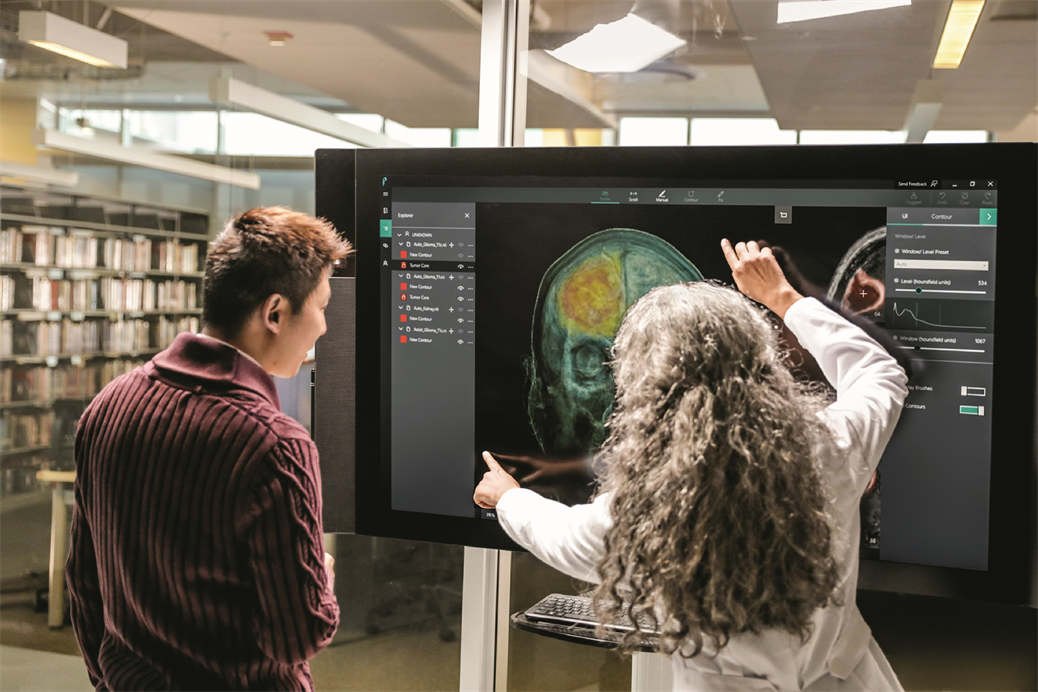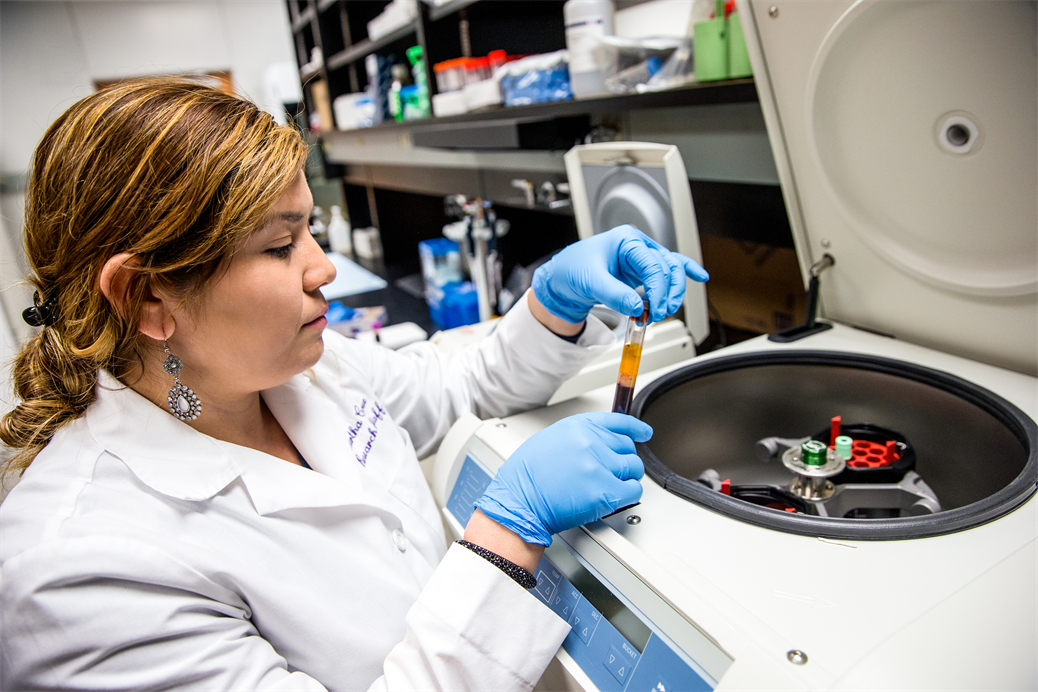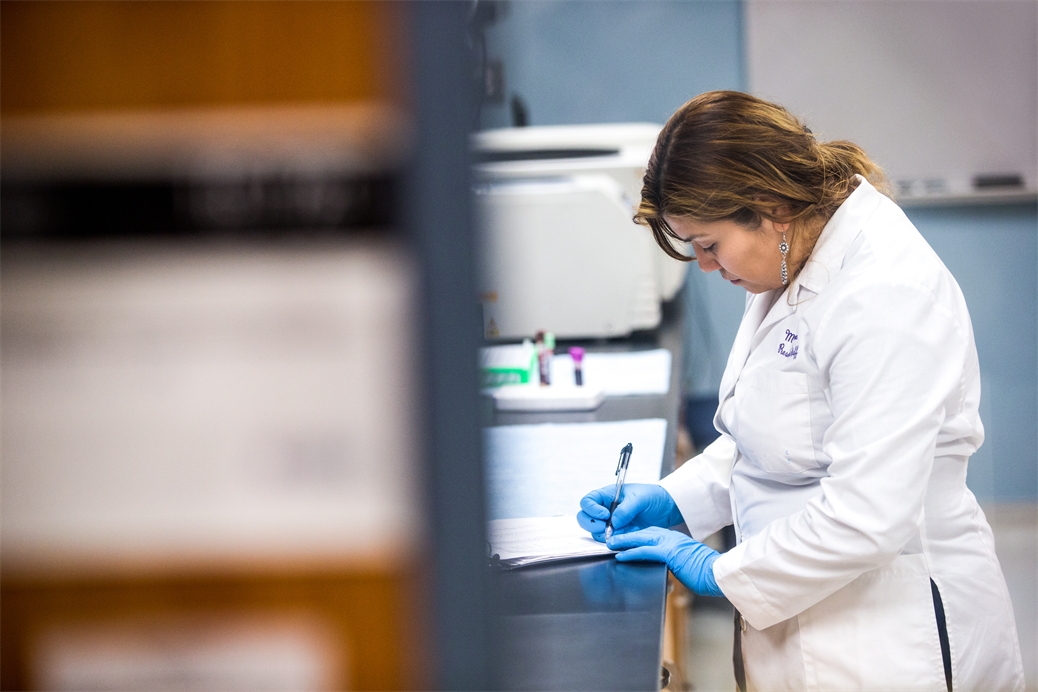Cloud computing tools are changing research in exciting ways
Vast data sets can be analyzed and shared securely, efficiently and at a fraction of the cost of providing the same resources on-site.



Eric Weimer, Ph.D., associate professor at the University of North Carolina (UNC) Department of Pathology and Laboratory Medicine, works in histocompatibility and immunogenetics, the science of matching donated organs with potential recipients. He knows more than almost anyone about the flaws in the time-sensitive, high-stakes process of making those matches (the U.S. has the highest rate of organ waste in the world). But to address them, he knew he needed outside help.
“I had the idea many years ago that someone who understands math at a far better level than myself could probably help,” said Weimer. That led him to Katharine Newhall, Ph.D., associate professor of mathematics at UNC Chapel Hill. The two soon recognized that the project needed to move to the cloud. That simple idea—to port the project to Microsoft Azure—soon became a wider collaboration, leading to unexpected benefits and significant clinical insights.
“Very quickly,” Newhall explained, “Microsoft said, ‘Maybe we should go back and look at the whole problem. Maybe there’s a more efficient way to handle the data and build some machine learning models.’”
This is how the Azure data scientists identified opportunities where Newhall and Weimer could take advantage of data sets that they weren’t using because of gaps. The researchers didn’t know this was possible.
Then, in just eight weeks, the researchers and the Azure team were able to automate the transplant-matching process. Rather than the traditional one-recipient, one-donor comparisons, at a maximum of 91 percent accuracy, the new process allows for evaluation of an essentially unlimited number of recipient-donor pairs, at 98 percent accuracy.
This will save time, money and lives. Seven hospitals are already planning to pilot the team’s work, which Weimer says was possible in part because of the ease of working in Azure. “It’s important,” Weimer added, “especially as a biologist, to understand that you don’t have to come in being a programming specialist to start utilizing these resources.”
Cloud platforms offer researchers tools that no institution could provide on its own. From gathering and analyzing vast amounts of data, to storing that data securely and sharing it seamlessly with collaborators across campus or across time zones, cloud platforms are transforming research itself, opening up avenues of exploration that would have been difficult or even impossible just a few years ago. Here are a few examples.
Greater security means more opportunities to collaborate
Research is a core component of Oregon State University’s mission, but some of its faculty members were stymied by a network that did not meet HIPAA security standards. The cost of meeting this standard on site was far too high.
The university needed a cloud service that worked with its existing systems, including the secure data collection tool Research Electronic Data Capture (REDCap), created and maintained by what is now the REDCap Consortium at Vanderbilt University, and used by researchers affiliated with OSU’s Center for Quantitative Life Sciences (CQLS) and the College of Public Health and Human Sciences. OSU also sought enhanced security for sensitive research data.
David McMorries, Chief Information Security Officer at OSU, was familiar with the Microsoft Azure platform’s compliance with requirements for the use, disclosure, and safeguarding of protected health information. He recommended that OSU engage with a Microsoft team of higher-ed Azure Specialists and Cloud Solution Architects to brainstorm possibilities.
“The Microsoft team worked with us on how to create a thoughtfully engineered solution so we could build it right from the start,” says McMorries. OSU’s solution architecture builds on the Azure Cloud Adoption Framework, specifically Azure Enterprise Scale Landing Zone. OSU deployed the REDCap front-end website using several Azure PaaS services, including Azure App Service, Azure Database for MySQL, Azure Storage, Azure Key Vault, Azure FrontDoor, and Azure Application Insights.
“The configuration of cloud services may sound complex,” said Paul Yu, Microsoft Cloud Solution Architect, “but we made it easier to implement by adopting DevOps practices and using Infrastructure as code for a repeatable deployment process.”
For Matthew Peterson, Senior Faculty Research Assistant at CQLS, the advantages go beyond HIPAA HITRUST compliance. “Another piece is identity management,” Peterson says. “To sufficiently secure everything, you need to pin ownership and access control at every step of the process, and the Microsoft Azure deployment is far more cohesive and trackable than what we had before.”
Migrating to Azure also created opportunities for cross-discipline coordination and collaboration in OSU research projects, replacing the previous semi-siloed approach.
“We have a virtual desktop we can deliver to a researcher almost anywhere,” said Christopher Viggiani, Associate Vice President for Research Integrity. “This opens up new and exciting opportunities for OSU to work with other institutions and partners on solving difficult problems. It definitely has the potential to catalyze research, build strong partnerships and expand the impact of our research.”

More input, better outcomes
There is no standard of follow-up care for lung cancer patients. Some patients continue to receive care at the hospital that treated them, some transition to an oncologist in their community, and others rely on their primary care physician. As a result, some of these patients end up receiving more specialized care than they really need, and some get less.

Travis Osterman, D.O., and his colleagues at Vanderbilt University Medical Center in Nashville are developing new protocols through a national effort that involves using cancer patient “personas” developed at Vanderbilt. Clinicians across the country are asked which patients in given scenarios would require more follow-up. The personas enable the use of generic treatment histories for ranking the best follow-up plan for actual patients, while protecting privacy.
“The goal for this research,” said Dr. Osterman, “is to get to the point where we’ll be able to match a given patient’s real history against our set of synthetic patients, and then hopefully, going forward, we’ll be able to build that into a calculator or a tool that can be used in oncologists’ offices across the country to help make sure that their cancer patients get the right follow-up that they deserve.”
As the overall dataset grows and the number of completed rankings increases, the calculations become more time- and resource-intensive. Building this capacity on site would have taken a year. Osterman’s team was up and running on Azure in 48 hours.

Dr. Osterman is also working with another oncology research lab at Vanderbilt to develop best practices for storing genomic data in the cloud.
“Once we get the genomic data stored into the Azure cloud,” said Dr. Osterman, “it will enable some of our more junior investigators—who have really audacious ideas—to have access to this data, and to test out their theories. Instead of having to buy a server, which would normally be like a five-year capital allocation, we can buy the compute and memory that they need to do analysis for a short period of time. This is the future. I think we're going to find that there are some really amazing discoveries just around the corner.”
Improving the quality and quantity of research in every field
These are just a few of examples of how Microsoft is collaborating with academic researchers across the country to provide computational resources far beyond what their institutions can provide and apply them in new and innovative ways. Every day, there are fewer and fewer limits on the volume or quality of data that can be gathered, analyzed and shared, quickly and affordably.
For more information, visit Microsoft’s Academic Research website.

This content was paid for and created by Microsoft. The editorial staff of The Chronicle had no role in its preparation. Find out more about paid content.


